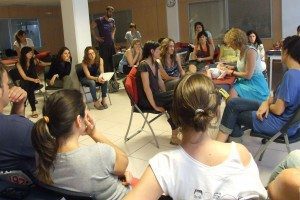
-
An acute bad back or neck?
-
Lumbago or chronic mechanical backache?
-
Muscle Spasms?
-
Sciatica?
-
Neuralgia?
-
Fibromyalgia?
-
Headaches that start from your neck?
-
Joint pains?
-
Generalised aches and pains?
-
Arthritic or Rheumatic Pain?
-
Strains, sprains or other minor sports injuries?
-
Muscular problems or stiff joints?
-
Muscle tightness or cramps?
-
Hip or knee pain from osteoarthritis?
-
Frozen shoulder / shoulder or elbow pain or tennis elbow from an associated musculoskeletal condition of your back or neck?
-
Digestion or Circulation Problems?
-
Inability to relax?
-
Help with migraine prevention?
-
Tension?
Don’t suffer pain in silence – your osteopath may have the answer.
Britain’s Osteopaths provide over 8 million consultations a year for problems like those above that may be related to musculoskeletal dysfunctions. Our expertise in treating back and other pain is sought by people both young and old and from all occupations and walks of life. The Department of Health recommends prompt treatment of back pain from osteopaths and other physical therapists.
When patients entrust the care of their back to an osteopath’s hands, we aim to treat the symptoms, help find out what is causing the problem and give advice to prevent it recurring in the future. Osteopathic treatment is usually gentle and often quick to help.
Our patients come from all walks of life and all age groups, the most numerous are those in sedentary occupations and light to heavy manual work. 60 % of osteopathic treatments are for back pain. 1 in 3 people have back pain at some point in their lives.
However, some osteopaths also see adults, teenagers, babies and children with various problems. Anecdotally, our patients report improvements in symptoms other than the areas above, where research has shown osteopathy / manual therapy to help.
 Cranial Osteopathy
Cranial Osteopathy
Cranial Osteopathic treatment may be used alongside the more conventional type of osteopathic treatment. Some patients prefer a purely cranial / very gentle approach. I use this approach for infants and younger children, and alongside other techniques for pregnant women and post partum mothers.
Osteopathic Medicine – some principles
Each individual is unique – osteopathic medicine aims to promote health by improving each individual’s physical function, leading each individual towards recovery, greater well-being and lowered susceptibility to illness in general
The body framework / musculoskeletal system contributes to the body’s health. Osteopaths work by diagnosing structural / mechanical faults and imbalances. Alterations of structure by injury, faulty posture, etc. eventually affect function. Equally function affects structure – poor posture over time affects the neck and back mechanics. This relationship applies to the vascular, immune, organ and neurological systems as well as the body framework.
Osteopaths place primary importance on restoring function – restoring alignment is secondary as most of us have mild differences in leg lengths or mild spinal curves that make perfect alignment virtually impossible to maintain.

Osteopaths don’t “put bones / discs back into place”, we are aiming to remove mechanical hindrances to normal movement, treating the body’s structures to help improve its function.
The practice of Osteopathy relies on constant reassessment and adaptation of techniques to suit the patient and their problems rather than a ‘one size fits all’ approach – every neck pain, shoulder pain or tennis elbow is unique, thus so is treatment.
 Cranial Osteopathy
Cranial Osteopathy